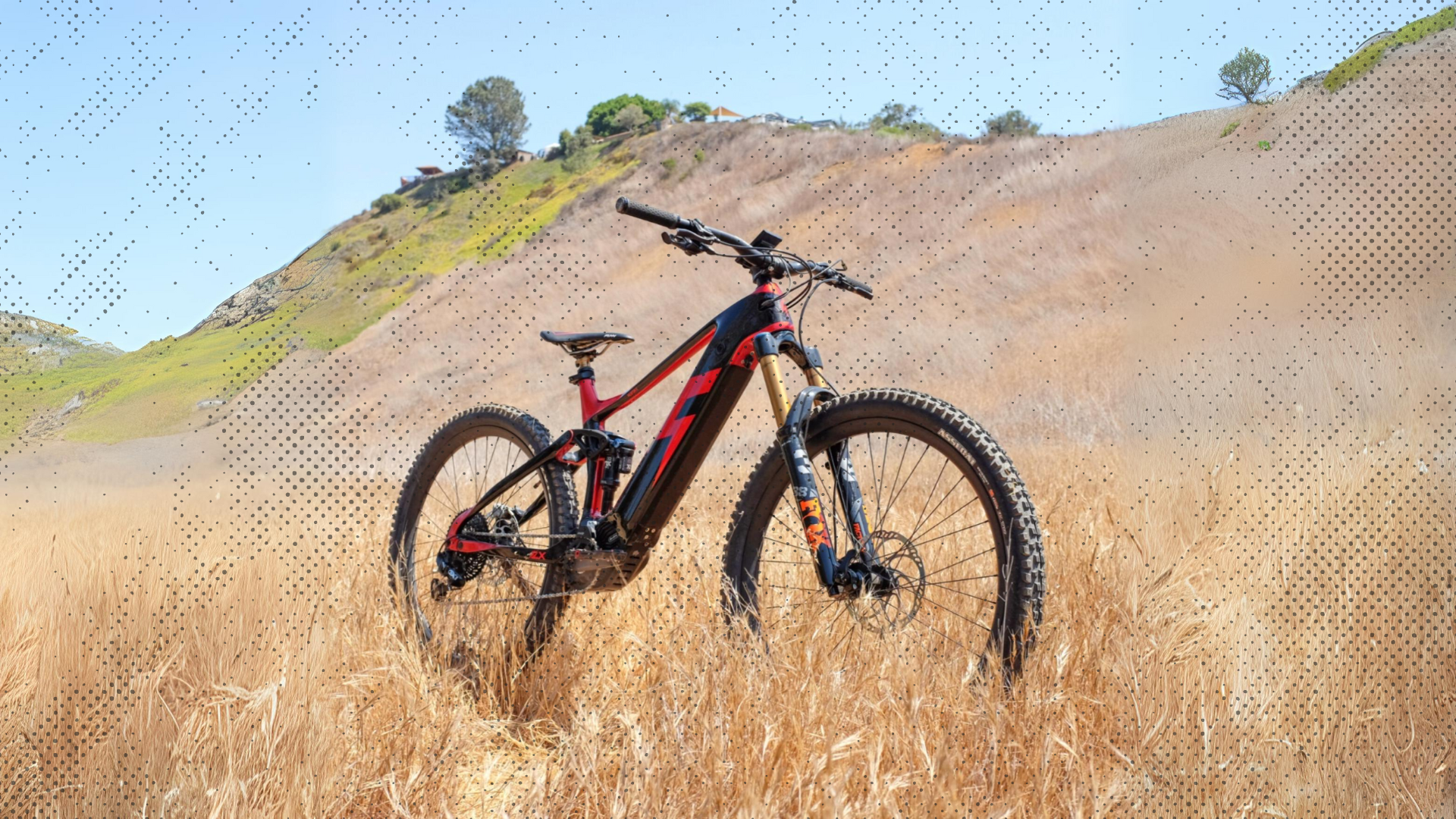National Parks are the most extraordinary adventure destinations in the country for bikers, hikers, and more. But when it comes to enjoying and exploring nature's wonders on your e-bike, the last thing you want is a big fat fine for heading down the wrong trail. Unfortunately, that's exactly what you'll get if you aren't clear on the rules of riding e-bikes in National Parks and or protected areas. In this article, you'll get the skinny on why e-bikes in National Parks are taboo and what to watch out for so you can ride without getting slapped with fines.
First, why are e-bikes a no-no in protected areas?
Protected areas, like National Parks, are meant to be enjoyed by all--exactly as nature intended. That's why, in 1964, the Wilderness Act was signed to manage and preserve important wilderness areas.
But... laws mean limitations.
Which is why there are so many rules and regulations posted at park entrances and trailheads. It's hard to keep track of what's allowed and what isn't. Even for regular adventurers.
National Parks are delicate ecosystems that can be thrown out of whack by something as small as a hiker's boot. So bringing motorized vehicles into the mix, even little ones like e-bikes, is a big mistake.
The fact is; even the most careful biker could accidentally cause erosion, trample protected foliage, or disturb an animal's home.
Luckily, e-bikes are becoming more and more popular…
Since e-bikes are classified as motorized vehicles, they were originally not allowed anywhere other than roads and parking lots.
But recently, in late 2020, in an effort to expand recreational access to all, particularly those with mobility or physical limitations, the National Park Service expanded regulations to allow for e-bikes within the parks. With conditions, of course.
How the NPS defines an e-bike:
There are still people who believe that e-bikes should be lumped in with motorcycles and dirt bikes. But thankfully, a recent memorandum to the 1964 Act defines him separately and allows them to be ridden where traditional bicycles are allowed.
E-bikes supported by up to a 750 watt motor with two fully operable foot pedals are allowed under the new adjustments.
But, a big but, this allowance prohibits Class 2 e-bike riders from exclusively
using the electric motor to move the bike.
In other words, you gotta pedal if you wanna move.
Read more FAQs directly on the NPS website here.
The ONE place you can always ride an e-bike within National Parks.
Before we get into the nitty gritty of riding an e-bike in protected areas, let's talk about the one place you can always ride.
On the roads.
Whether paved, gravel, or packed dirt, as long as it's clearly a designated road, you can pedal.
Parking lots and other administrative roads are safe, too. But not very much fun.
3 places you absolutely cannot ride your e-bike.
Ok, so the roads are safe. Duh.
But where is an absolute no-go?
If you're on a bicycle, pedal-assisted or not, you must avoid:
🛑 Marked walking or hiking trails.
🛑 Unmarked trails.
🛑 Open land.
This should be common sense, but attempting to ride a bicycle, electric or otherwise, in these areas is dangerous. For you and the environment.
But don't worry. You still have options.
5 things to remember when biking in protected areas
Since the recent amendments to the Wilderness Act allow e-bikes into the parks, it also allows for exceptions and special regulations on a park-by-park basis.
Meaning... local National Parks can choose to allow or disallow e-bikes as they see fit.
So, if you're planning to hit up a particular Park or protected area, keep these 5 things in mind:
1. Leave No Trace
Whether you were a Boy Scout or not, you’ve probably heard of “leave no trace.” It helps make sure that the gorgeous environment that you’re enjoying remains for everyone else.
That means:
- Don’t take anything with you that doesn’t belong to you, including flowers, rocks, etc.
- Don’t leave anything behind that doesn’t belong, including trash.
- Don’t damage the environment purposefully or accidentally.
Overall, minimize your impact on the environment as much as possible.
2. Signage is Law
Inside the Park system, anything posted on a sign, whether temporary or permanent, is law. That means if a trail that you regularly ride is temporarily marked “no bicycles,” you risk getting fined if you ride anyway and get caught.
This also means that some trails or areas that were previously off limits may be temporarily or permanently opened up for bicycle access. Always check the signs.
3. Use Your Legs
As mentioned above, Class 2 e-bikes cannot be ridden purely using the onboard motor. Put in the work and use your legs to pedal. That’s what you’re out here for, isn’t it?
4. Avoid Busy Trails
This one might not be that obvious. But if you’re riding an e-bike, they tend to pack a lot more punch than a traditional bicycle, and are often harder to stop on a dime.
Avoid busy trails, especially those used by both walkers and cyclists, to respect everyone’s space and access to recreation.
3. Each Park is Different
Just because you were able to ride freely at one park does not mean that the next will be the same. It would be smart to read up on local regulations before visiting, especially if you're new to a particular park.
In California, the following rules are in place for all National Parks in the state:
|
National Park |
Regulations |
|
Channel Islands National Park |
No bicycles of any kind are allowed on the islands. More details. |
|
Death Valley National Park |
Electric bicycles can only be used on roads open to public motor vehicles. More details. |
|
Joshua Tree National Park |
You can ride eBikes on all roads open to vehicles (but not on trails, this is the same as for traditional bicycles). More details. |
|
Sequoia & Kings Canyon National Park |
Electric bicycles can only be used on roads open to public motor vehicles. |
|
Lassen Volcanic National Park |
Electric bicycles can only be used on roads open to public motor vehicles. More details. |
|
Mojave National Preserve |
Regular bikes and E-Bikes are only allowed on paved and dirt roads. Bikes are not allowed on single-track trails or off road. More details. |
|
Pinnacles National Park |
Electric bicycles can only be used on roads open to public motor vehicles. |
|
Redwoods National Park |
Electric bikes are permitted on all trails and roads except for one partial and two full trials: Coastal Trail (partial), Little Bald Hills Trail, and the Ossagon Trail. More details. |
|
Yosemite National Park |
Electric bicycles are allowed on all trails and roads that bicycles are allowed on (the speed limit on bike paths is 15mph). More details. |
The following parks have special regulations designating trails for bicycle use:
|
National Park |
State |
Regulation Details |
|
Rocky Mountain National Park |
Colorado |
|
|
Saguaro National Park |
Arizona |
|
|
Cuyahoga Valley National Park |
Ohio |
|
|
Hot Springs National Park |
Arkansas |
|
|
Grand Teton National Park |
Wyoming |
|
|
Mammoth Cave National Park |
Kentucky |
|
|
Sleeping Bear Dunes National Lakeshore |
Michigan |
|
|
New River Gorge National River |
West Virginia |
|
|
Chattahoochee River National Recreation Area |
Georgia |
|
|
Bryce Canyon National Park |
Utah |
|
|
Pea Ridge National Military Park |
Arkansas |
|
|
Golden Gate National Recreation Area |
California |
If you keep these things in mind, pedaling the Parks can be a dream come true.
Always remember that visiting the National Parks is a privilege, not a right. Especially if you don’t respect the rules.
Luckily, enjoying the sights freely without risking a fine is as easy as remembering to read the signs. When in doubt, ask a Ranger or check the NPS website for more information.
Remember that things can change frequently and the local Park Superintendent has the final say in whether e-bikes are allowed or not.
Happy adventuring!





Share:
The ABC's of E-Bike Batteries: Everything You Need to Know
Transform Your eBike Experience: The Ultimate Gear for the Road Warrior!